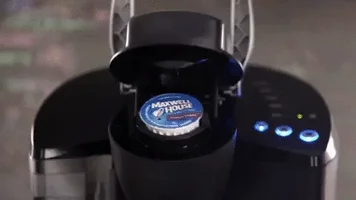Ways to reduce the environmental impact of your morning coffee
It jump-starts the mind. Coffee consumption is growing faster than the human population, with annual consumption now topping 10 million tons per year.
But, just as I have considered for milk and booze, coffee has a bunch of environmental impacts that begin with how it is grown and extend to how we dispose of it in the environment.
The impacts of coffee production on
tropical forests have been discussed for decades. Most tropical ecologists
believe that the growth and harvest of coffee in the shade—that is, under an
intact canopy of tropical forest—is not too bad for the environment.
However, when the price of coffee
rises, so does that rate of deforestation to provide for sun-grown coffee in
the tropics. Sun-grown coffee results in the loss of birds common in mature
tropical forests.
But, the story is not unequivocal: some species of birds actually do better or even colonize sun-coffee plantations.
For a regional landscape, the
greatest number of birds will be found in a mosaic of forest and coffee plantations,
especially if the tracts of forest are large.
Energy use
In terms of energy use, more than
half of the environmental impact in the production of coffee occurs in the
plantations where coffee is grown, to account for cultivation, fertilizers and
pesticides. When you decide to have a cup of coffee, you have already made your
largest contribution to the energy used to deliver coffee to your cup.
How we brew coffee determines most
of the rest of the energy use. Should we use French press, a traditional
drip-pot, or one of the new modular or "pod" brewing systems.
There is no contest in terms of resources used to manufacture the system—pod-brewing systems use much more material, especially in plastics and electronics, all of which take energy to produce.
There is no contest in terms of resources used to manufacture the system—pod-brewing systems use much more material, especially in plastics and electronics, all of which take energy to produce.
How coffee pots are employed flips
the evaluation. Considerable energy is used when consumers brew a full pot
using traditional methods, but then leave the heat on to keep it warm for the
rest of the morning.
Pod-brewing systems that are
maintained on phantom power between brews use less energy per cup.
Unfortunately, pod-brewing systems that are left in standby mode—where hot water is kept available for the next user—have the worst environmental impact, dwarfing the difference in impact between traditional drip and pod-brewing systems. Overall, French press systems use the least energy at every stage.
Unfortunately, pod-brewing systems that are left in standby mode—where hot water is kept available for the next user—have the worst environmental impact, dwarfing the difference in impact between traditional drip and pod-brewing systems. Overall, French press systems use the least energy at every stage.
Plastic disposal and caffeine
waste
The pods themselves create
environmental impact, both in their manufacture and in disposal. Some pods are
now advertised to be recyclable, but the limited data available suggest that
this is infrequent.
Most used pods end up in a landfill.
The production and disposal of coffee pods accounts for up to one-third of the energy used to brew coffee in those machines.
Most used pods end up in a landfill.
The production and disposal of coffee pods accounts for up to one-third of the energy used to brew coffee in those machines.
Caffeine is now found as a
ubiquitous contaminant in natural waters, especially in countries with high and
increasing coffee consumption. Some caffeine is derived from the disposal of
waste coffee and coffee grounds, whereas some, typically 2 percent to 3 percent,
passes through the human system intact and contaminates sewage waters.
Sewage treatment can remove up to 70
percent to 98 percent of caffeine, so if sewage waters are treated only a small
amount of caffeine passes into natural waters, where it exposes fish and other
wildlife.
Nevertheless, one recent study found
that 35 percent of environmental samples worldwide had caffeine concentrations
that were above the threshold of undesirable effects on organisms.
If you must have coffee, buy
shade-grown coffee, brew it by French press, and reduce your impact on nature
by disposing of the coffee grounds in compost.
William H. Schlesinger is one of the
nation's leading ecologists and earth scientists. He has served as dean of the
Nicholas School of the Environment at Duke University and president of the Cary
Institute of Ecosystem Studies.
This article originally ran on Translational
Ecology, Schlesinger's science-based blog
offering analysis of current environmental topics.

